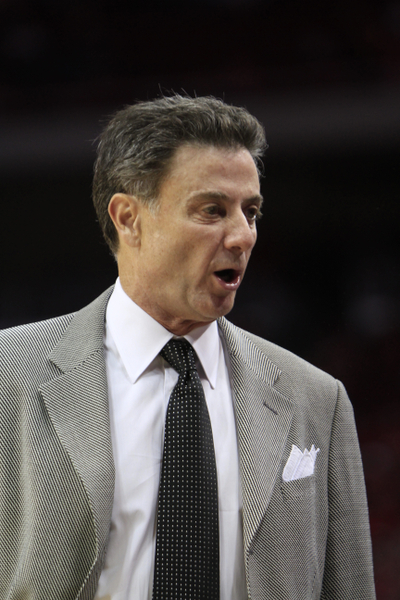On Rick Pitino And Concussions
Posted by jstevrtc on December 23rd, 2010Louisville head coach Rick Pitino is taking a little heat for expressing his thoughts recently on the increasing incidence of concussions among athletes, specifically his own Cardinals. Actually, it’s not a perceived increasing number of head injuries he seems to have a problem with as much as the increasing frequency with which they seem to be diagnosed:
“It’s the seventeenth concussion we’ve had this year. I’ve been coaching now 35 years. I’ve seen maybe five concussions in 35 years. The new thing is everybody has a concussion. If you walk out and slightly brush the door, you have a concussion. That’s the way it is today.”
Sure, it’s probably not the best thing to say when you’re one of the main people responsible for the welfare of a group of young athletes, especially when you know it will probably get back to the parents. But even though it’s not said in the warmest and fuzziest tone, Pitino’s point is a fair one. That is how it is today.
We’re hearing more about concussions for two reasons: the increased awareness that resulted from the NFL’s tightening of return-to-play standards for players who suffer head injuries, and the fact that concussion is a clinical diagnosis, not one that results from a specific blood or imaging test. This means that there’s more variance in what a concussion really is, leading to more instances of it being diagnosed. A knock to the head that makes you dizzy for a few moments? That’s a concussion. Did Ray Lewis blindside you with a helmet-to-helmet slobber-knocker that rendered you unconscious for a few days? That’s a concussion, too. So is everything in between.
Check out the guidelines for diagnosing and treating concussions in sports as established by the American Academy of Neurology. A helpful document, that. But painfully vague in places (could your depressed mood now be a result of the mild knock you took to the head a couple of weeks ago? Well…maybe). As we’ve said, saying “concussion” is no more informative than saying “head injury” because you can’t tell if it’s from a head butt or a harpoon. The best part of those guidelines is where it tells you how to grade the severity of the concussion, because if you can tell how bad it is, then you know how best to treat it (put ’em back in the game, or book it to the ER). The exact same information is presented in a slightly different way in a document on concussions the NCAA has provided to coaches in all sports.
You might not like the way he said it, but Rick Pitino is right in this case. It’s unlikely that there are more actual head injury-events happening. But concussions are receiving more attention in sports reporting because the NFL has made it a priority (and like it or not, we live in NFL Nation), and because a diagnosis of concussion represents one point on a wide continuum of head injuries, not just one specific entity. This can easily lead to a few more diagnoses from physicians and trainers, but that doesn’t mean the guidelines for diagnosing them are being violated. Plus, we’re dealing with people’s brains, here. If it was your head that had just taken a hit from, say, Jared Sullinger or Brian Urlacher, wouldn’t you rather the person examining you err on the side of caution?










































